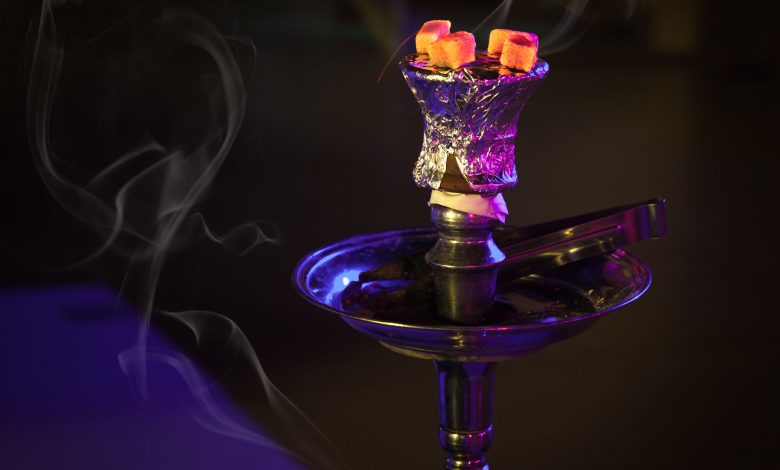
HMC: Shisha smoking increases the risk of Covid-19 infection
حمد الطبية: تدخين الشيشة يزيد خطر الإصابة بكوفيد-١٩
QNA – Doha:
Hamad Medical Corporation (HMC) Tobacco Control Center has warned of the dangers of shisha smoking, especially in light of the outbreak of the Coronavirus (Covid-19) around the world.
The Head of the Hamad Medical Corporation (HMC) Tobacco Control Center Dr. Ahmad Al Mulla, said contrary to what many people believe, smoking shisha is substantially more harmful than smoking cigarettes.
“Many people have the misconception that shisha smoking is harmless, thinking the water-filled pipe filters out toxic chemicals. However, the practice is more harmful than cigarette smoking. In fact, one session of shisha smoking is known to have harmful effects equivalent to smoking 20 to 60 cigarettes and shisha smoke contains a number of heavy metals and chemicals.
The chemicals that can be found in emissions from burning charcoal for shisha have also been linked to several illnesses, including those that lead to reduced lung function and cause emphysema, chronic bronchitis, and lung cancer. Regular shisha smokers also have an increased risk for heart disease,” said Dr. Al Mulla.
Dr. Al Mulla said the WHO has also found that the amount of toxic carbon monoxide released from shisha is not only dangerous to the smoker, but also to those around them, noting that second-hand smoke from shisha is more dangerous than smoke from other tobacco products. He says the WHO has also confirmed that just 30 minutes of exposure to second-hand shisha smoke, known as passive smoking, can have adverse health effects. He notes the toxic fumes from the smoke have also been found to remain in furniture and fabrics for an extended period of time and can travel through air conditioners, which poses a danger to everyone within the vicinity of the smoker, including children.
Smoking Cessation Specialist at HMC’s Tobacco Control Center Dr. Jamal Abdullah, said there are two types of shisha addiction – physical and social.
“Physical addiction, in which the person uses shisha daily and becomes addicted, and social addiction, in which a person consumes shisha once or twice a week, normally on a social basis with friends or colleagues, are the two forms of shisha addiction. Regardless of the type of addiction, both lead to the same result, which is that the individual becomes addicted and puts themselves at increased risk for an array of health issues. Even smoking just once a month can have serious health implications because of the large amounts of toxins contained within shisha smoke.
Smoking shisha has also been linked to increased rates of infectious illnesses, namely tuberculosis, herpes, and hepatitis,” said Dr. Abdullah.
Dr. Abdullah said the Tobacco Control Center has a number of treatment options available to those wanting to quit smoking, including medications, nicotine replacement therapies, behavioral therapy, and a laser therapy treatment. He says if an individual has a strong desire to quit smoking, it is possible.
“We recently introduced a laser therapy treatment which is being used for the first time in the region. Each session takes about 20 minutes and the laser stimulates selected areas of the body, for example, the ears, face, and wrists.
It does not cause any pain or negative side effects and so far has proved to be very successful,” said Dr. Abdullah.
الدوحة – قنا:
حذر مركز مكافحة التدخين بمؤسسة حمد الطبية من مخاطر تدخين الشيشة وخاصة في ظل تفشي فيروس كورونا (كوفيد-19) في مختلف أنحاء العالم.
وأشار الدكتور أحمد الملا مدير مركز مكافحة التدخين إلى تحذيرات منظمة الصحة العالمية من أن تدخين الشيشة يزيد من خطر الإصابة بالفيروس، وذلك ليس فقط لكون الشيشة ناقلا قويا للوباء بل ولأن التدخين يؤثر سلبا على المناعة وصحة الجسم بصورة عامة ما يجعل الشخص أكثر ضعفا في وجه الفيروس.
وأوضح الدكتور الملا أن ما يعتقده البعض من أن تدخين الشيشة أقل ضررا من السيجارة وأن مرور الدخان من خلال الماء الموجود في الشيشة يعمل على ترشيح الدخان من المواد الضارة وبالتالي تقليل الضرر الناجم عن تدخين الشيشة هو اعتقاد خاطئ، حيث إن تحليل الدخان الخارج من فم مدخن الشيشة أظهر أنه يحتوي على كميات عالية من القطران والغازات السامة والنيكوتين بما يعادل من 20 وحتى 60 سيجارة في الجلسة الواحدة وربما يفوق هذا العدد إذا كانت مدة الجلسة ساعة كاملة.
وأضاف أن هذه الكمية الكبيرة من السموم تأتي أثناء تدخين الشيشة من ثلاثة مصادر هي التبغ ودبس الفواكه أو ما يعرف بالمعسل ومن احتراق الفحم.
وحول التأثير الضار لتدخين الشيشة على جسم المدخن، لفت الدكتور الملا إلى أن تدخين الشيشة يقلل من كفاءة أداء الرئتين لوظائفهما ويسبب انتفاخ الرئة (الإنفزيما) والالتهاب الشعبي المزمن وهذا المرض يحد من قدرة الإنسان على بذل أي مجهود كلما تفاقم المرض.
كما أن مدخن الشيشة تزيد لديه فرص الاصابة بأمراض القلب مقارنة بغير المدخنين بثلاثة أضعاف وعرضة أيضا لسرطان الرئة والمريء، كما أن كمية غاز أول أكسيد الكربون السام المنبعث من الشيشة والذي يؤذي المدخن ومن حوله أكبر بأضعاف مضاعفة من الذي ينبعث من منتجات التبغ الأخرى.
وأكدت منظمة الصحة العالمية بأن نصف ساعة واحدة كفيلة بإلحاق الأذى لمن يتعرضون من غير المدخنين لأبخرة التدخين السامة وهو ما يعرف بالتدخين السلبي، وأن هذه الأبخرة السامة تلوث الهواء وتبقى لفترات تسبح فيه وعالقة بالجدران والأثاث وتجد طريقها عبر المكيفات مما تشكل خطرا على كل من كان في البيت وخاصة الأطفال وهذا ما يسمى بالتدخين الثالث.



